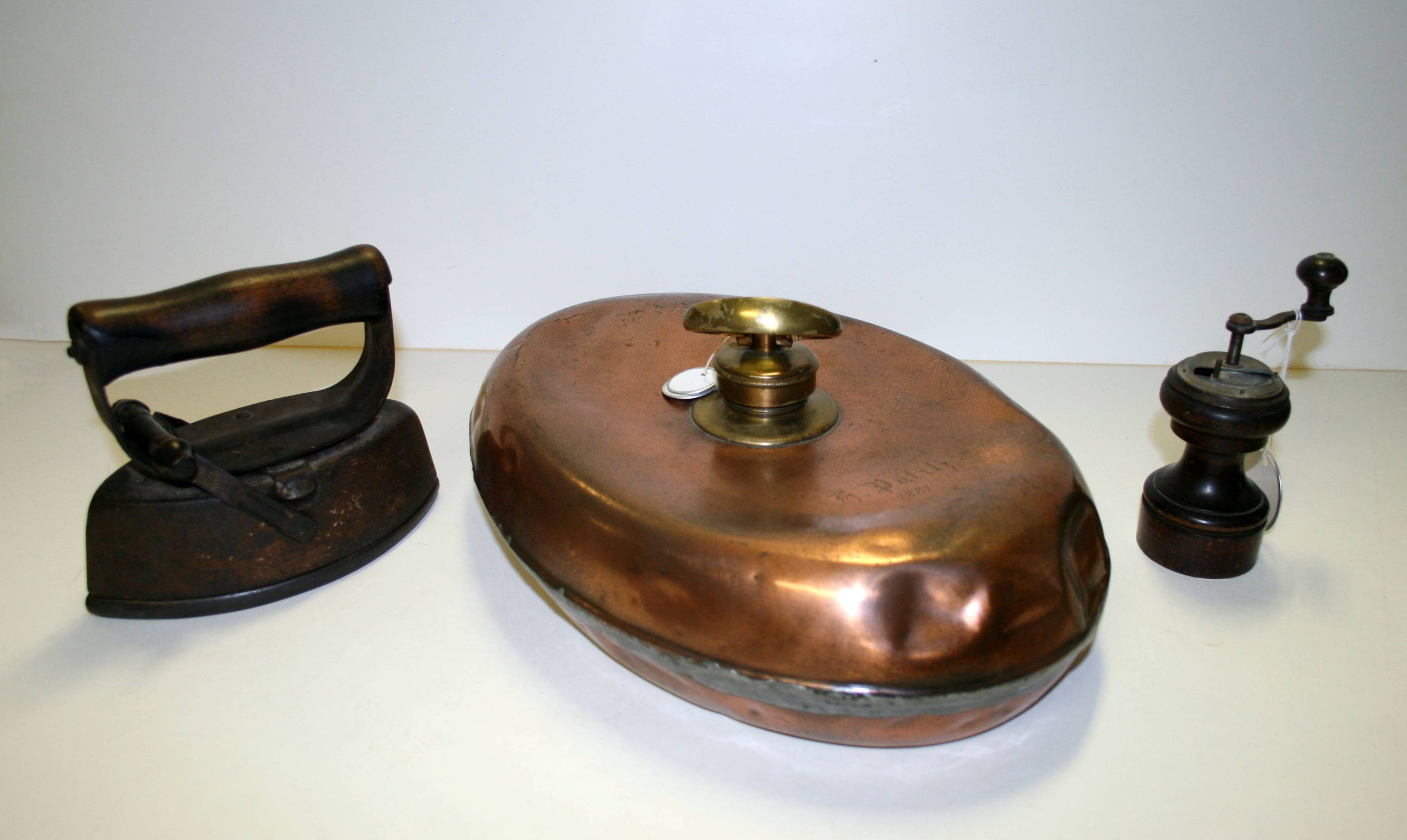
JEFF-784, JEF-1193, JEFF-1533
Dramatic expansion in population, wealth, income and territory were matched by an unprecedented increase in consumer goods in the nineteenth and twentieth centuries. It was mostly the woman's role to be in charge of the domestic sphere of the family and there were many everyday items she used in running a home. Studying the use of household goods has been an important source of investigating the domestic life of the past. JNEM has an array of various objects that were used in everyday life during these times. Three of these objects are discussed here- a copper bed warmer (JEFF 1193);walnut pepper mill (JEFF 1533);and a cast iron sad iron (JEFF 784).
A warming pan, known as a bed warmer, was a valuable family possession handed down through generations but not so expensive that it was only for the rich. Wealthy homeowners might have either a silver or a richly decorated copper warmer. The copper warmer in our collection was used with hot water as a foot or bed warmer. It was made in two parts and soldered together and has a brass stopper over the opening for pouring in water. The warmer was made by H. Patitz in 1881, a company which is still making hot water bottles and other household items.
Black pepper is indigenous to southern India.It was said to be found more than 4000 years ago. It was through the spice trade that it made its way around the world to be used in most international cuisines. A man named Peugeot of France created the first pepper grinder in 1842. The steel mechanism inside cracked the peppercorns before the actual grinding process. The pepper mill in our collection is made of walnut wood and metal. The metal top has a small door which slides open for filling. The top is engraved with a floral motif. The curved grinder handle consists of a metal arm with a wood knob at the end. The bottom is open, exposing the grinding mechanism. Antique salt and pepper grinders are popular collectibles.
One of the more tedious chores of domestic life was ironing clothes. Some of the earliest metal flat irons were forged by blacksmiths in the Middle Ages. They were heated on an open fire or a stove and the metal handles had to be grasped with a thick potholder, rag or glove. These irons, often called smooth irons were also called sad irons. They were basically shaped pieces of metal that are flat
and polished on one side and have a handle attached to the other created for the purpose of de-wrinkling clothes. "Sad" is an old English word for "solid", and the term sad iron is often used to distinguish the largest and heaviest of flat irons that usually run between 5 and 9 pounds. In 1870, a woman named Mary Potts from Iowa created a new design for the sad iron with a detachable handle.
The sad iron in our collection is called an asbestos sad iron. These became very popular around the turn of the twentieth century. These particular irons have a hood with an asbestos lining ready to clamp onto the sad iron core that had been heated on a stove.The iron came with an asbestos mat. By fitting the
heated core into the hood or cover, it bottled up the heat so it was channeled through the hot surface and smoothly pressed the clothes. The other benefits were that no heat rose up to bother the person ironing and the handle stayed cool to the touch. Despite the invention of an electric iron in 1882, sad irons were used in rural areas well into the 1950's.
The nineteenth century was an era of extraordinary growth and change in America. Improvement in household goods and comforts made everyday life much more comfortable.
